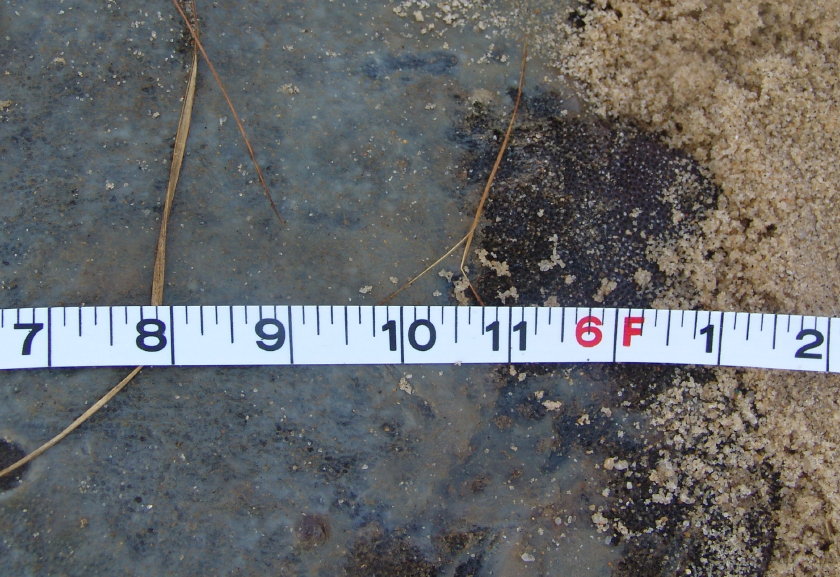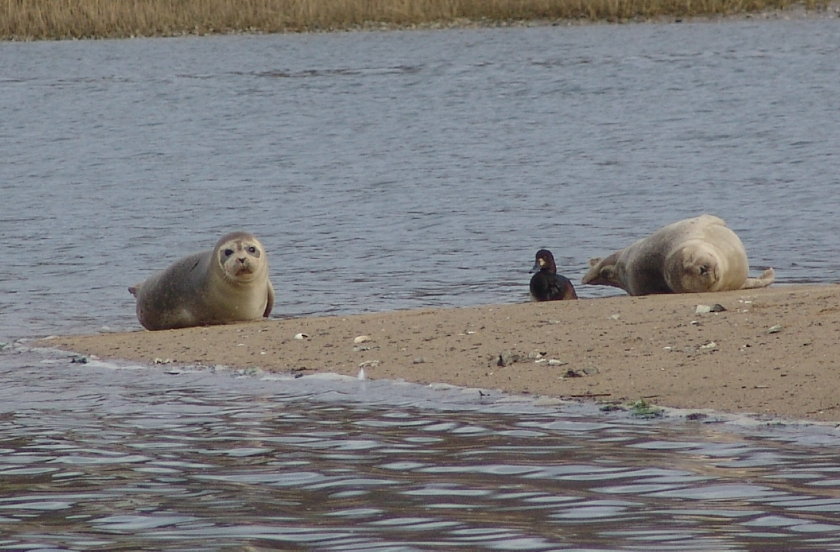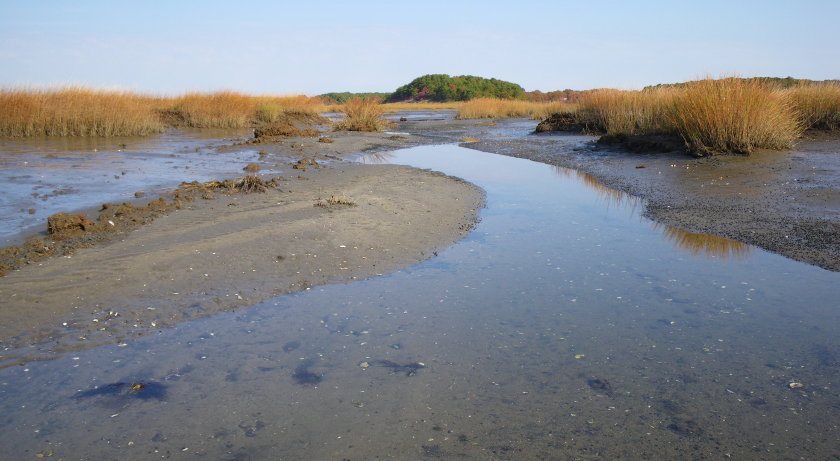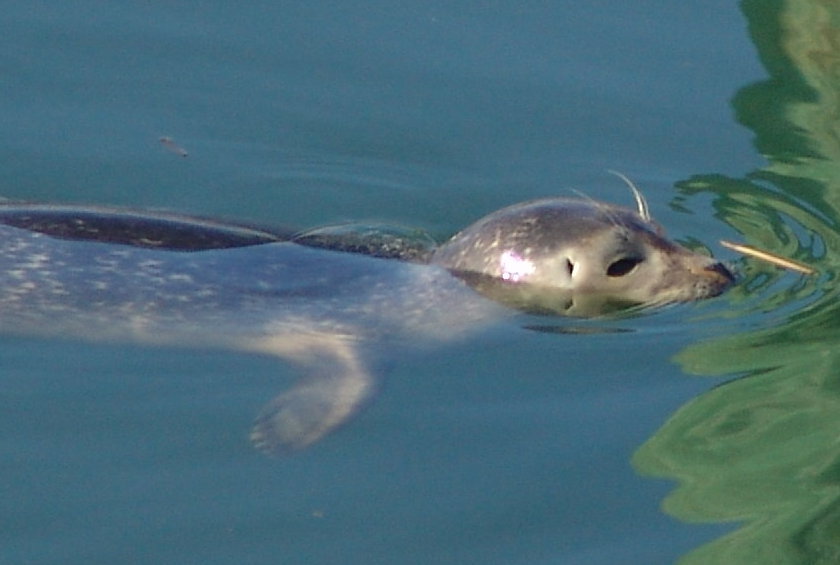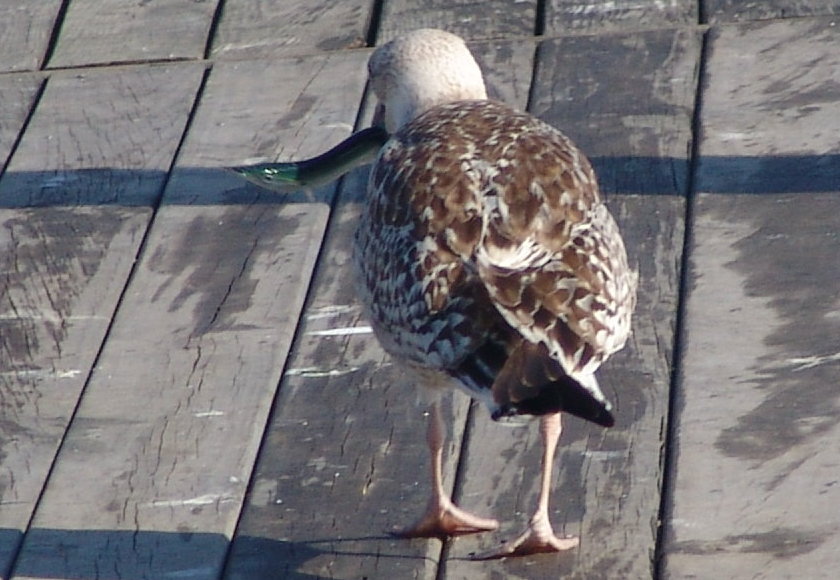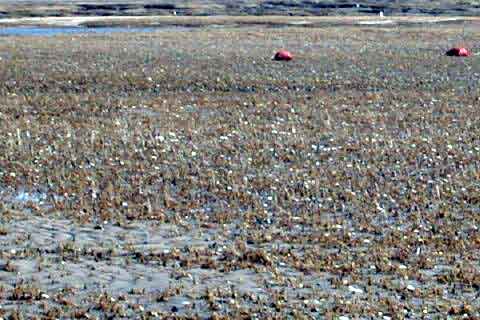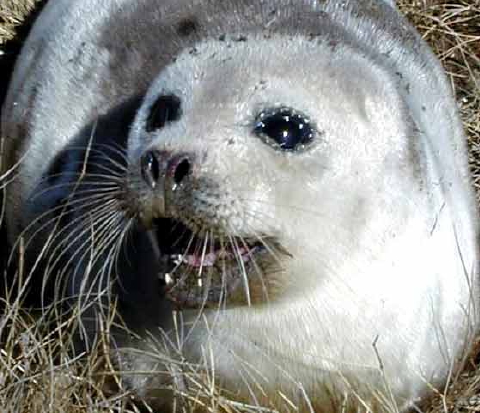Don Lewis (center), Krill Carson (right) and Her Assistant
Like many research teams, Turtle Journal admits to a certain addiction to CSI-like dramas. Turtle Journal takes special pleasure in the sun, warmth and Caribbean color of CSI Miami … especially its heat as winter grips the Great White North. The original CSI in Las Vegas ranks first in science and second in warmth, but still catches our attention. The New York rendition can be a bit too close to home, not in its urban setting, but with its top coats and snow. But nothing in that collection of shows or their look-alikes could prepare us for Friday’s ocean sunfish examination in sub-20 degree temperatures with a north-northwest wind blasting in our faces directly from the Arctic tundra. Conditions were brutal and beyond description. For instance, we wore three layers of gloves: surgical gloves, woolen gloves and thick work gloves. Still, when we took five minute “thaw breaks” in the car between cuts, our fingers sizzled in frozen pain as though holding a block of dry ice in the plam of a bare hand with knuckles lying on a blazing griddle.
Male Ocean Sunfish (Mola mola) @ Boathouse Beach
As reported in yesterday’s post (Another Ocean Sunfish Washes Ashore on Cape Cod), this animal had been bouncing around the bay for a while as illustrated by the breakdown in its skin. Inside, the internal organs had largely deteriorated beyond useful data other than anatomical organization. We did determine the gender of this ocean sunfish: male. The one at Linnell Landing was female; so, we now have photo-documentation of both genders. We hope to post much of this material to a special location on Turtle Journal for access by students and scientists to aid future naturalists in studying marine species, but with enough warning about the nature of these images, so that no one will be offended.
Measures 6 Feet 1.5 Inches Snout to Caudil Fin
For the record, this male measured 6 feet 1.5 inches curved measurement from caudal fin to snout and 7 feet 4 inches from tip of anal fin to tip of dorsal fin. The female on Linnell Landing measured measured 6 feet 8 inches (curved surface) from tip of snout to trailing edge of caudal fin. It measured 7 feet 5 inches from the tip of the dorsal (top) fin to the tip of the anal (bottom) fin. For these two samples, the ratio of length to height was 83.5% for the male and 89.9% for the female.
Click Here to View Video in High Quality
Clinical Sample of Anatomical Examination
One objective of these necropsies is to construct a model of ocean sunfish anatomy which requires detailed and precise measurements and documentation. While we won’t show any too candid images in these posts, the video clip above gives an example of the type of documentation we are attempting to achieve.
Strange Bedfellows Enjoy Wintry Shirttail Point
Not everyone was put off by yesterday’s cold. A couple of local blubbery critters settled into the leeward shadow of Shirttail Point to bask on the sandy beach formed at low tide. Since the tide was rising, they would squirm and wiggle about every couple of minutes to gain a little higher ground for a few more minutes of basking pleasure.
Life’s a Beach
When we watched this scene play out through the lens, we thought of the old Sesame Street bit about “one of these things doesn’t look like the other, one of these things doesn’t belong.” But it didn’t seem to matter much to the participants. Everyone was welcome to join the beach party.
Click Here to View Video in High Quality
What’s Wrong with Sunbathing in a Winter Coat?
Spend two minutes savoring life as a Wellfleet seal!
At this time of year, if something isn’t nailed down tight, then it is flotsam. Beaches become littered with living, dead and material debris thrown about like toothpicks in blistering winds and roaring seas. It’s a good time to be a researcher on Cape Cod, if only the thermostat could be set about 50 degrees higher. Sigh.


